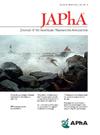Pharmacist-led sulfonylurea deprescribing in older adults
IF 2.5
4区 医学
Q3 PHARMACOLOGY & PHARMACY
Journal of the American Pharmacists Association
Pub Date : 2025-05-01
DOI:10.1016/j.japh.2025.102387
引用次数: 0
Abstract
Background
Sulfonylureas are a high-risk medication in the elderly due to risk of hypoglycemia. Given the continued use of these low-cost medications in elderly patients over recent decades and guideline recommendations for individualized glycosylated hemoglobin (A1c) goals in the elderly, opportunities exist to reduce use in patients with well-controlled diabetes. Hypoglycemia is a costly and potentially deadly adverse effect of inappropriate treatment with sulfonylureas in older adults.
Objectives
To decrease hypoglycemia risk with a clinical pharmacist-led intervention by systematically deprescribing sulfonylureas in a cohort of elderly patients.
Methods
Patients in a managed care setting aged ≥ 80 years with a tightly controlled A1c (≤ 6.5%) and a sulfonylurea pharmacy claim in the previous 120 days were identified as candidates for deprescribing. Medical data were reviewed to determine the clinical appropriateness of sulfonylurea discontinuation for each patient. Physicians were contacted to consider deprescribing based on pertinent clinical characteristics of identified patients, current guideline recommendations, and rationale for deprescribing.
Results
Eighty-nine patients were identified as candidates for discontinuation. Of these, sulfonylurea was discontinued in 41% (n = 37) of patients following pharmacist intervention. Average A1c following intervention remained within generalized guideline goals.
Conclusion
Pharmacist-led interventions can facilitate successful deprescribing by providing systematic guidance, medication therapy expertise, and collaborative decision-making support for physicians.
药师主导的老年人磺脲类药物处方。
背景:由于存在低血糖风险,磺脲类药物对老年人来说是一种高风险药物。鉴于近几十年来这些低成本药物在老年患者中的持续使用,以及指南中关于老年患者个体化 A1c 目标的建议,减少在控制良好的糖尿病患者中使用这些药物的机会是存在的。低血糖是老年人不适当使用磺脲类药物治疗的一个代价高昂且可能致命的副作用:目的:通过临床药剂师主导的干预措施,有计划地减少老年患者群中磺脲类药物的处方,从而降低低血糖风险:方法:将年龄≥ 80 岁、A1c 控制严格(≤ 6.5%)且在过去 120 天内曾在药房报销过磺脲类药物的患者确定为停药对象。对医疗数据进行审核,以确定每位患者停用磺脲类药物的临床适宜性。根据确定患者的相关临床特征、现行指南建议和停药理由,联系医生考虑停药:结果:有 89 名患者被确定为停药对象。其中,41%(37 人)的患者在药剂师干预后停用了磺脲类药物。干预后的平均 A1c 保持在通用指南目标范围内:药剂师主导的干预措施可为医生提供系统指导、药物治疗专业知识和协作决策支持,从而促进成功停药。
本文章由计算机程序翻译,如有差异,请以英文原文为准。
求助全文
约1分钟内获得全文
求助全文
来源期刊
CiteScore
3.30
自引率
14.30%
发文量
336
审稿时长
46 days
期刊介绍:
The Journal of the American Pharmacists Association is the official peer-reviewed journal of the American Pharmacists Association (APhA), providing information on pharmaceutical care, drug therapy, diseases and other health issues, trends in pharmacy practice and therapeutics, informed opinion, and original research. JAPhA publishes original research, reviews, experiences, and opinion articles that link science to contemporary pharmacy practice to improve patient care.

 求助内容:
求助内容: 应助结果提醒方式:
应助结果提醒方式:


